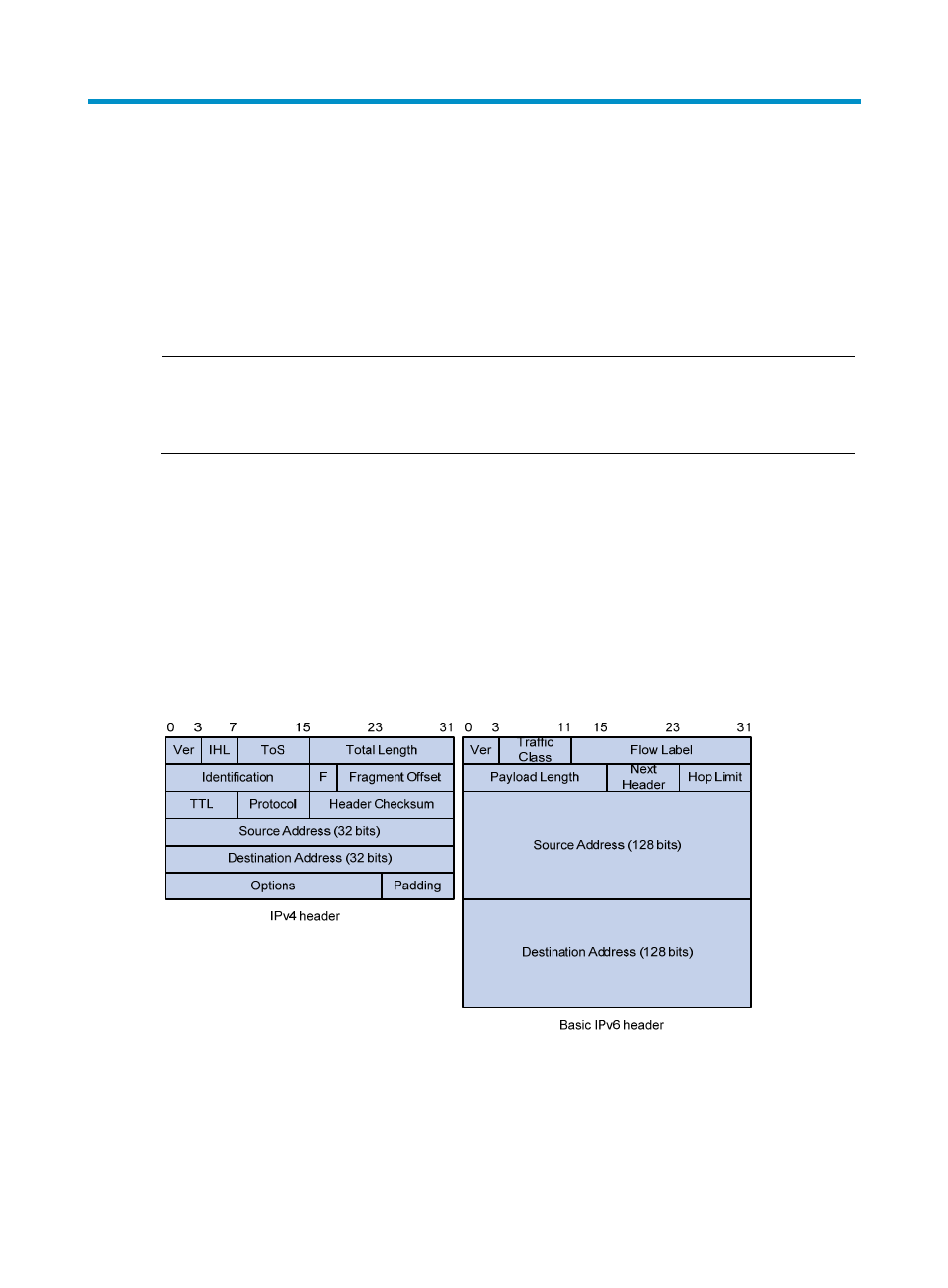Configuring basic ipv6 settings, Overview, Ipv6 features – H3C Technologies H3C S5560 Series Switches User Manual
Page 153: Simplified header format, Larger address space

138
Configuring basic IPv6 settings
Overview
IPv6, also called IP next generation (IPng), was designed by the IETF as the successor to IPv4. One
significant difference between IPv6 and IPv4 is that IPv6 increases the IP address size from 32 bits to 128
bits.
NOTE:
The term "interface" in this chapter collectively refers to Layer 3 interfaces, including VLAN interfaces and
Layer 3 Ethernet interfaces. You can set an Ethernet port as a Layer 3 interface by using the port link-mode
route command (see
Layer 2—LAN Switching Configuration Guide).
IPv6 features
Simplified header format
IPv6 removes several IPv4 header fields or moves them to the IPv6 extension headers to reduce the length
of the basic IPv6 packet header. The basic IPv6 packet header has a fixed length of 40 bytes to simplify
IPv6 packet handling and improve forwarding efficiency. Although the IPv6 address size is four times the
IPv4 address size, the basic IPv6 packet header size is only twice the size of the option-less IPv4 packet
header.
Figure 54 IPv4 packet header format and basic IPv6 packet header format
Larger address space
IPv6 can provide 3.4 x 10
38
addresses to meet the requirements of hierarchical address assignment for
both public and private networks.
